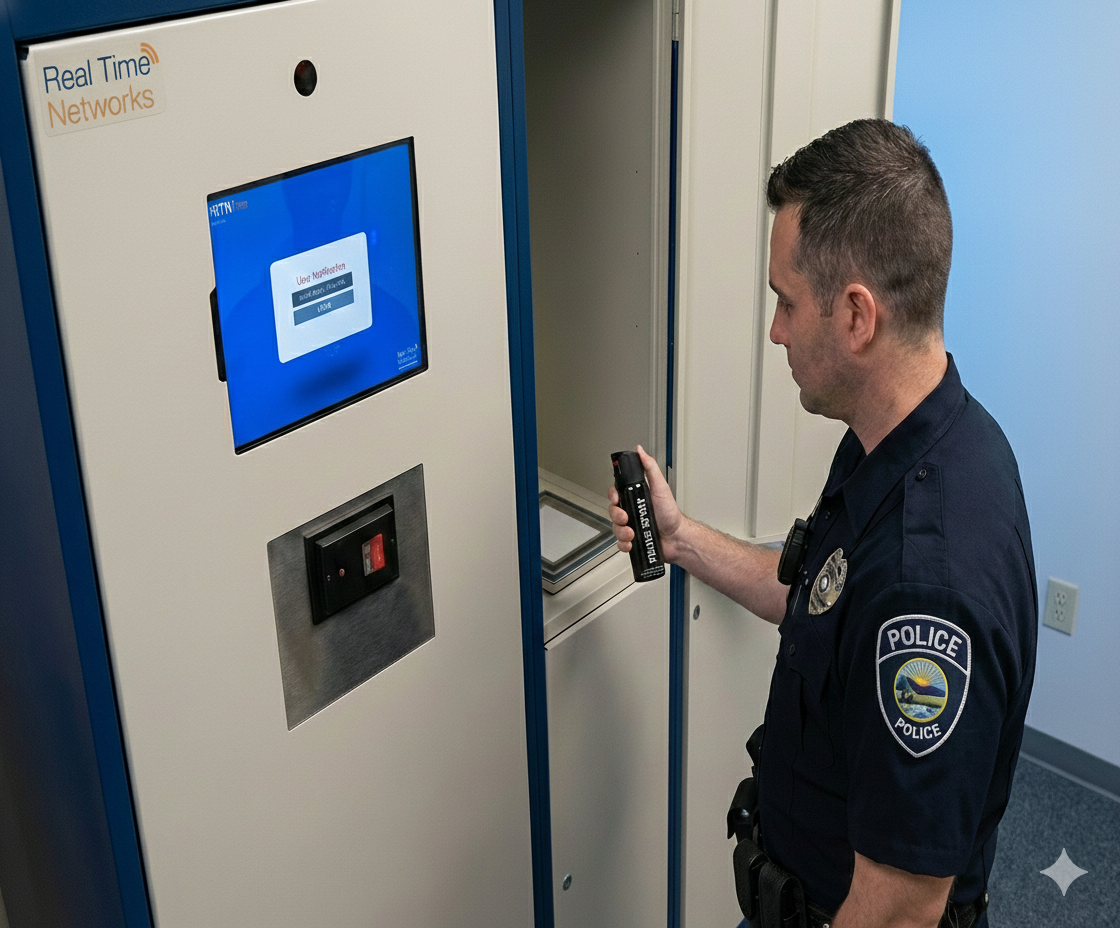By Jay Palter | May 25, 2021
Indoor positioning systems (IPS) have many potential safety and security applications. But figuring out how to apply this new and powerful technology in your organization can sometimes be confusing. You can do so much with indoor positioning that it can sometimes be tricky figuring out where to start.
In this article, we’ll lay out everything you need to know about IPS and their potential use cases in safety and security.
What is indoor positioning?
Indoor positioning is the process of identifying the location of people or assets in an indoor facility using wireless sensors. Usually, the concept also refers to analyzing that location information to benefit the identified individual or the business. Indoor positioning can be carried out by a variety of different management and wireless technologies. In recent years, IPS has received increased attention as a security service in many sectors, including healthcare, energy, and higher education.
Indoor positioning systems are networks of transmitters and receivers. Transmitters usually take the form of tags or badges attached to the asset or person they track. Receivers, sometimes called beacons, receive location and ID information from transmitters and relay it to a connected management system.
An IPS gives operators access to a wealth of information. Operators can use these systems to locate critical assets or people in real time, generate tracking reports, monitor performance trends over time, and customize when alerts are triggered. For example, a system operator could configure an audible alert to immediately sound if a high-value tracked asset passes through an exit point.
How do IPS and GPS differ?
Indoor positioning systems and global positioning systems (GPS) are often confused. They provide similar services but in different capacities.
GPS uses multiple satellite connections to determine an object’s location, primarily outdoors. It helps track general locations and movement for assets such as vehicles where identifying an approximate location within 5-10 meters is acceptable.
IPS uses local sensors within a facility to locate tracked objects. These systems provide much more precise locations and are designed to work in crowded indoor environments where GPS signals are unreliable at best.
What are the leading indoor positioning technologies?
Each of the many different wireless standards used in IPS today has its pros and cons. Six of the most commonly used standards today are:
Radio Frequency Identification (RFID)
RFID is one of the most popular IPS standards. Both active and passive versions of RFID can be used for indoor positioning.
Active transmitters are battery-powered and can provide real-time location tracking at range. Passive transmitters are unpowered. They bounce a signal back to receivers when they’re in close proximity.
Because RFID tags use radio waves to transmit, they don’t require line of sight to work with receivers. Signals can pass through many common building materials as well. However, metal surfaces can interfere with RFID signals.
Infrared (IR)
IR transmitters use infrared light to send their location signal to receivers, much like how TV remotes work. IR positioning systems are inexpensive, but they require line of sight to work. This type of system is a suitable option for more open environments and low-priority tracking applications.
Wi-Fi
Enterprise Wi-Fi internet antennas can also provide indoor positioning service for connected devices. In business environments, laptops, tablets, and other devices ping multiple different Wi-Fi beacons several times a second to find the one with the strongest signal. The Wi-Fi network control system can trilaterate those devices’ locations based on how long it takes those pings to occur.
The greatest advantage to Wi-Fi IPS is that it uses existing infrastructure. However, its location accuracy is lower than many competing standards. It’s also limited to where you have Wi-Fi coverage.
Bluetooth
You can also use Bluetooth short-range wireless for indoor positioning. Bluetooth is low-power, very cost-effective, and has traditionally been used for pairing wireless peripherals, such as pairing a headset to a smartphone. However, it has a much shorter range compared to other standards such as active RFID.
Ultra-Wideband (UWB)
UWB offers highly accurate indoor positioning. Beacons bounce a high-frequency radio signal off tags in their covered space. Signals pass well through building materials and return to the beacons with centimeter-level accuracy.
That precision comes at a cost though. Ultra-wideband wireless systems are expensive and have a high power consumption. This standard is suitable for high-risk or mission-critical needs where added tracking costs are acceptable.
Cellular
Like Wi-Fi and Bluetooth, cellular data towers can also provide indoor positioning service. The upside of using cellular IPS is that mobile phones can act as receivers.
Cellular signals penetrate buildings much better than GPS signals, but they are still prone to indoor interference. Accuracy is lower, often only to within 50 meters. Cellular IPS may be a viable option in some niche use cases.
These are just some of the most popular wireless standards used for indoor positioning. Many others are used for legacy applications or in special circumstances.
How do you use IPS for security and safety?
Indoor positioning systems have many possible safety and security applications. Just a few are:
Access Control
Indoor positioning systems can help you monitor the movement of employees and visitors in high-security locations. You can create virtual perimeters, sometimes called geofences, within open facilities. If any personnel passes one of these virtual perimeters, the system automatically notifies security personnel.
Guard and Personnel Tracking
IPS can monitor the movements of key personnel, such as security guards, in real time. This capability is helpful during routine operations by adding an extra layer of accountability to ensure guards complete their assigned tours on schedule. It’s also beneficial during emergencies when you can identify the closest responders to emergency incidents as they unfold.
Emergency Mustering
You can use RFID tracking badges to monitor the progress of drills and live evacuations. IPS can automatically take roll calls and log personnel safe at muster points so emergency managers can focus on response efforts. The system can identify personnel at risk in the facility and provide emergency contact information through an attached personnel database when needed by first responders.
Asset Tracking
Just as you track people in high-security settings, you can also use IPS to track equipment moving in such settings or highly sensitive equipment in everyday business settings. IPS can issue alerts if that equipment passes any of your geofenced perimeters or through exits.
What is indoor positioning analytics?
The concept of big data has made its way into the field of physical security. Big data refers to the recent trend of collecting and analyzing large volumes of information generated by the networks of computers and sensors attached to people and equipment. IPS beacons and receivers are one such network.
IPS analytics software takes the positioning data collected by beacons, analyzes it, and generates valuable business intelligence for operators. The benefits of performing IPS analytics include:
Improved Individual Operations
Tracking analytics can help you identify inefficiencies in your everyday operations. For example, if you’re tracking security guard patrol routes, you can optimize checkpoint placement to ensure they are most likely to reach critical areas on time. You might also notice in your equipment tracking that staff members routinely waste time traveling from one side of your facility to the other because they can’t sign out an essential piece of equipment in their department.
New Insights on Performance Trends
One of the greatest benefits of performing IPS analytics is identifying trends in the data that human observers have missed. For example, are external contractors regularly accidentally entering unlabeled sensitive facilities? Then perhaps you should change which entrance they’re allowed to use or modify signage.
During evacuation drills, is foot traffic always congested in certain areas? Reassign evacuation routes to keep people moving efficiently before an actual evacuation occurs.
These capabilities have led many security experts to consider analytics to be an essential component of a modern, world-class business security program.
What should you look for in any IPS?
No matter the application you have in mind, there are three things you should evaluate in any IPS service you consider:
1. Location Accuracy
As noted above, different wireless technologies offer different levels of precision. Materials in your facility also impact signal strength and precision. Evaluate whether each system will be capable of providing the accuracy you need, not in theory, but for your actual work site.
There is such a thing as good enough too. You may only want room-level accuracy for some applications, so you might prefer something such as IR that can’t send signals through walls. Other times, such as for emergency response in open facilities, you might require exact location intelligence.
2. Cost-Effectiveness
IPS technology is new and powerful, but purchasing an indoor positioning system is still an investment from which you need to guarantee a return. A new system must either directly improve your operations or generate actionable information that will help inform business decisions. Consider how each system you evaluate might help you achieve those goals.
3. Battery Life
This ties into evaluating cost-effectiveness. The battery life and longevity of tracking tags are frequently the limiting factors determining how cost-effective an IPS system will be over time. Longer battery life provides less downtime and fewer replacement purchases, which translate into more cost-effectiveness over time.
IPS is a powerful technology that needs to be applied correctly.
Indoor positioning systems are powerful, flexible technology. That flexibility is both these systems’ greatest upside and poses the most significant challenge to getting the most cost-effective performance from them. You should now have a good idea of what to look for when evaluating which will be the most effective IPS for your organization.
Are you ready to learn more about deploying effective physical security solutions at your company? Check out our guide, Physical Security 101: How to Start Building a World-Class Security Program.
Subscribe to our blog

Jay Palter
Vice President of Marketing & Partnerships






